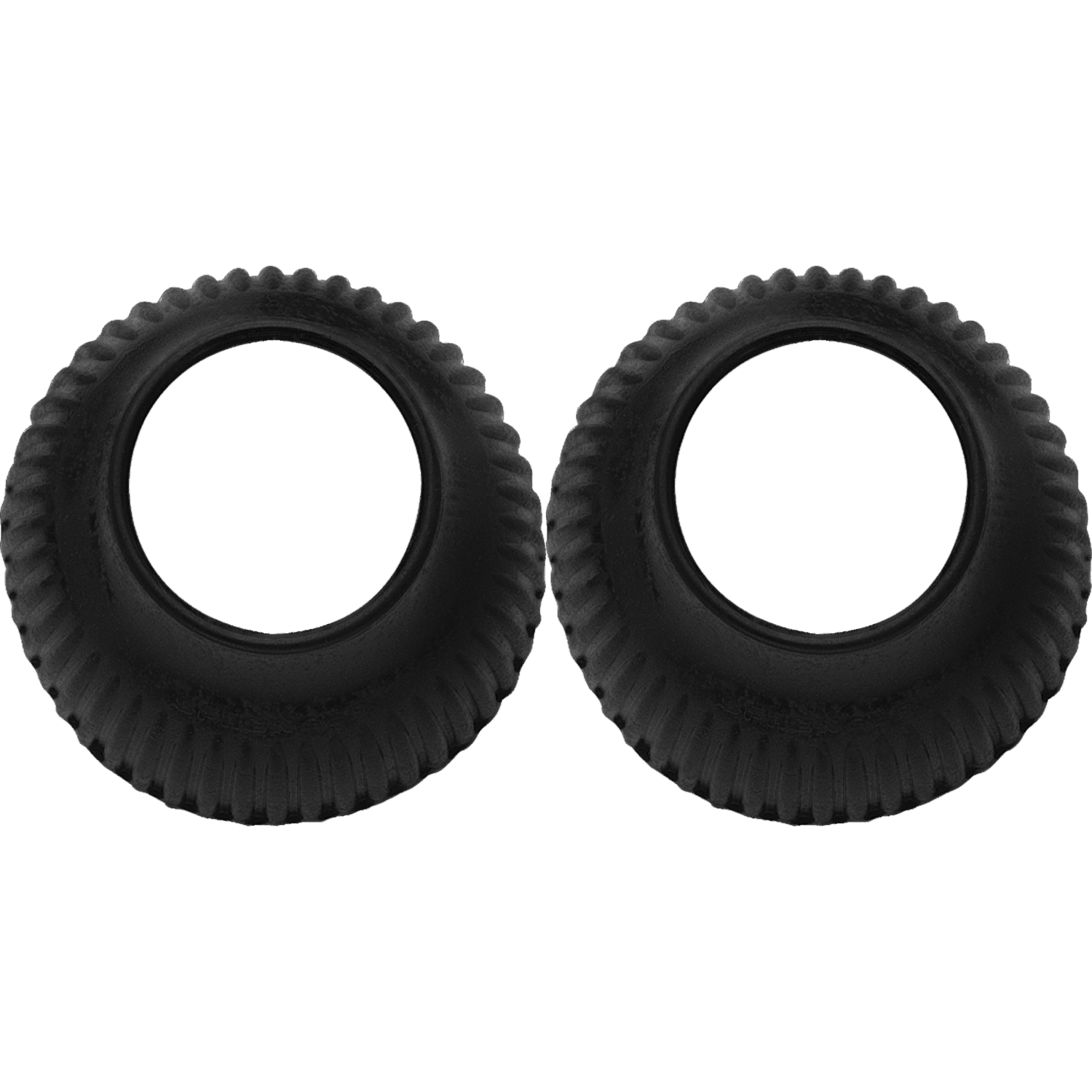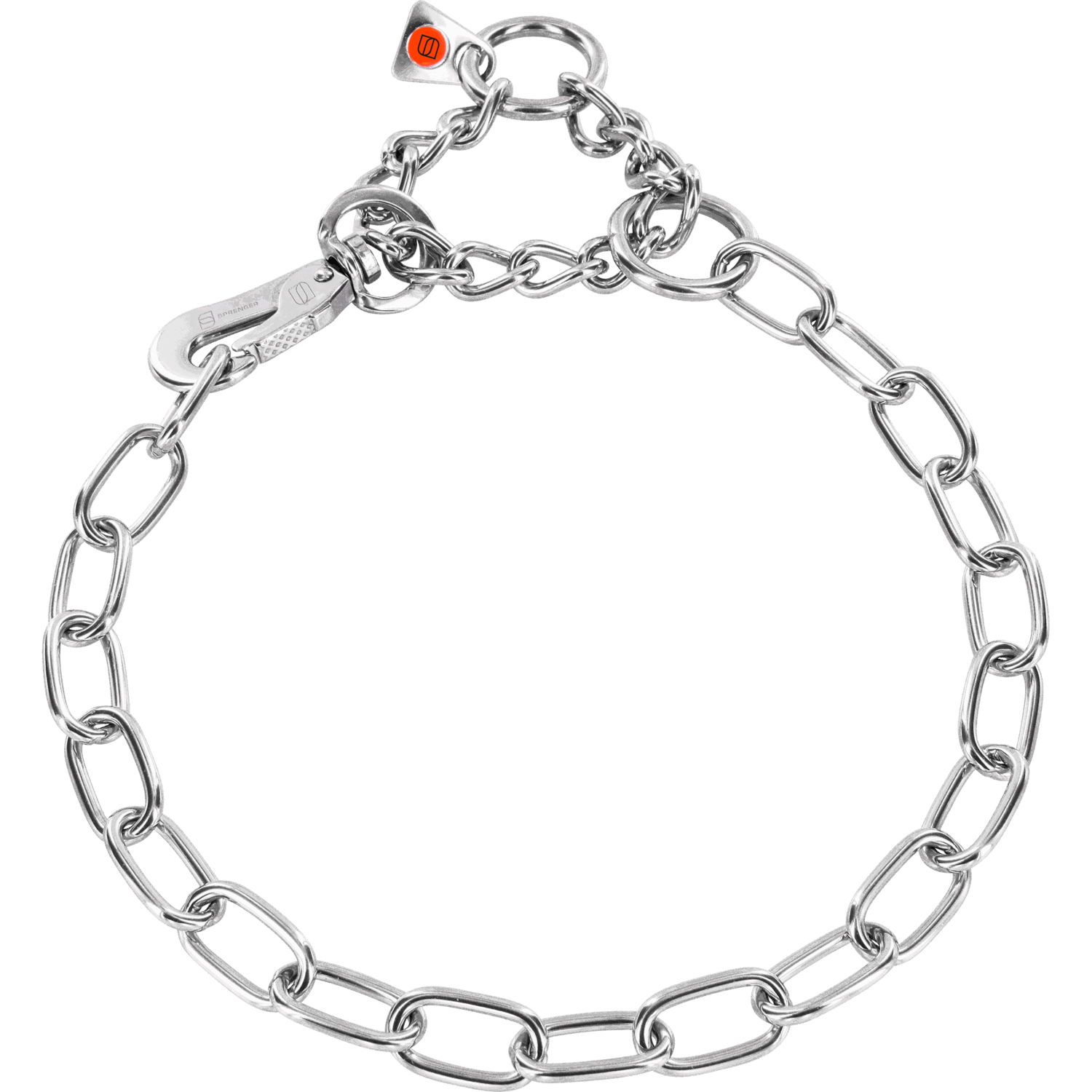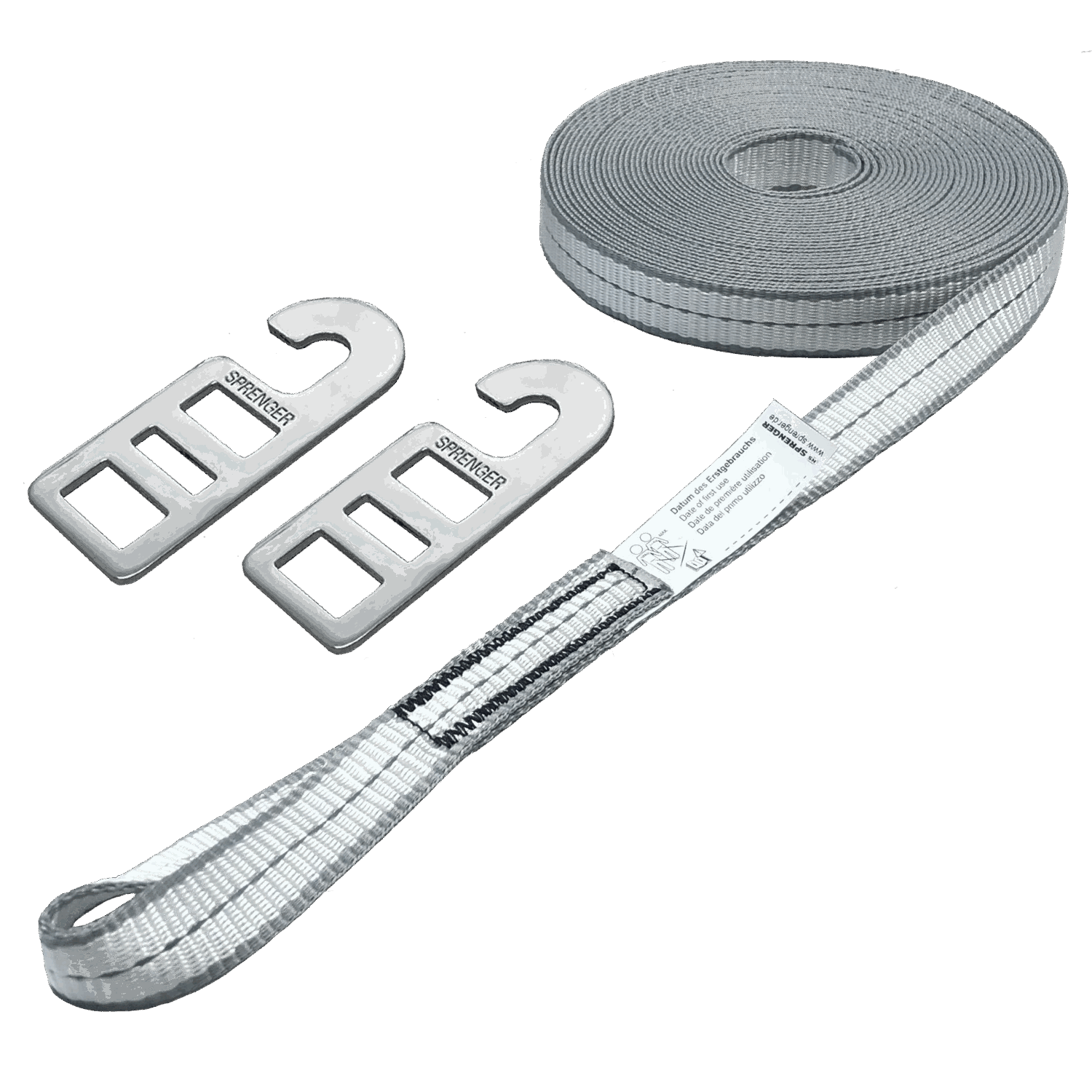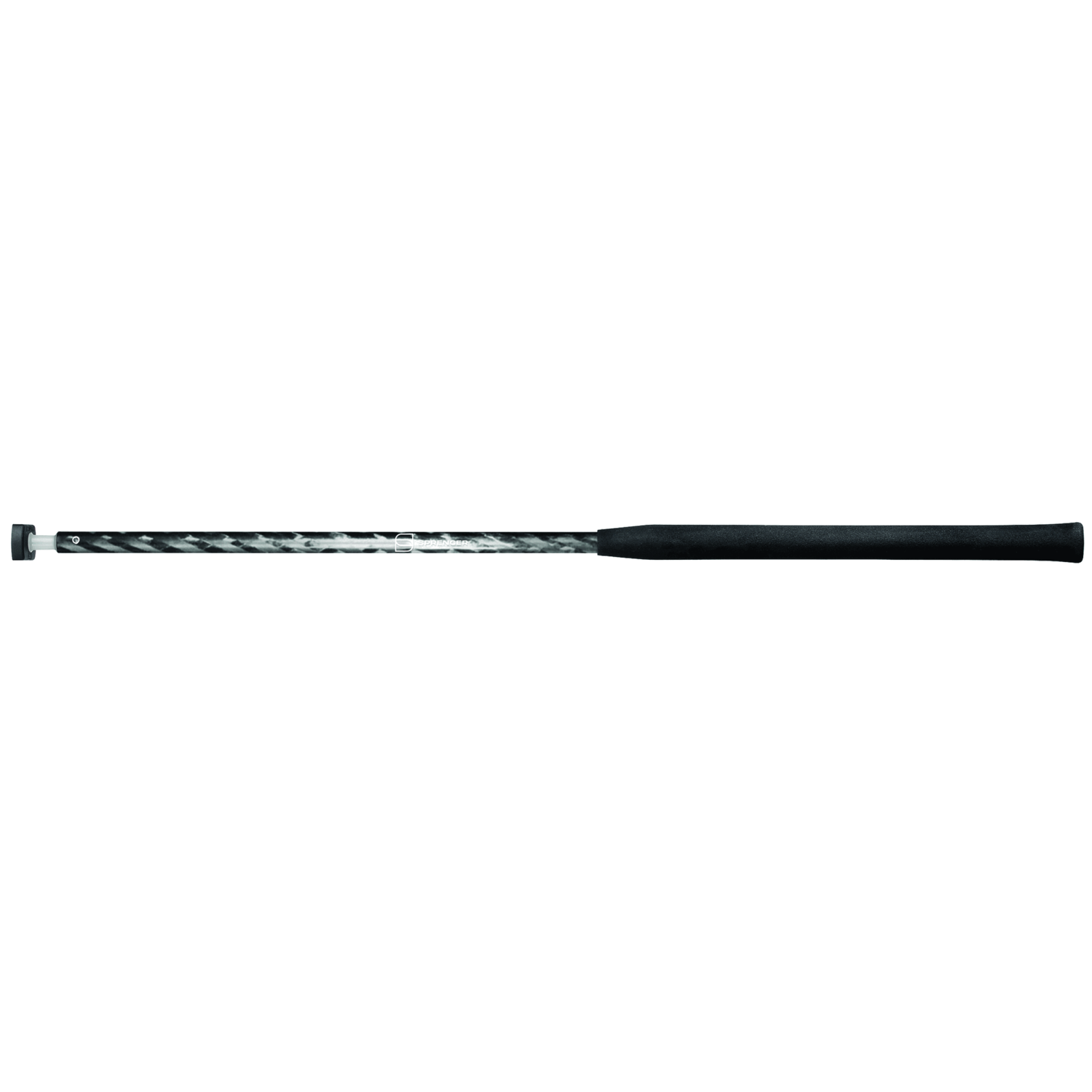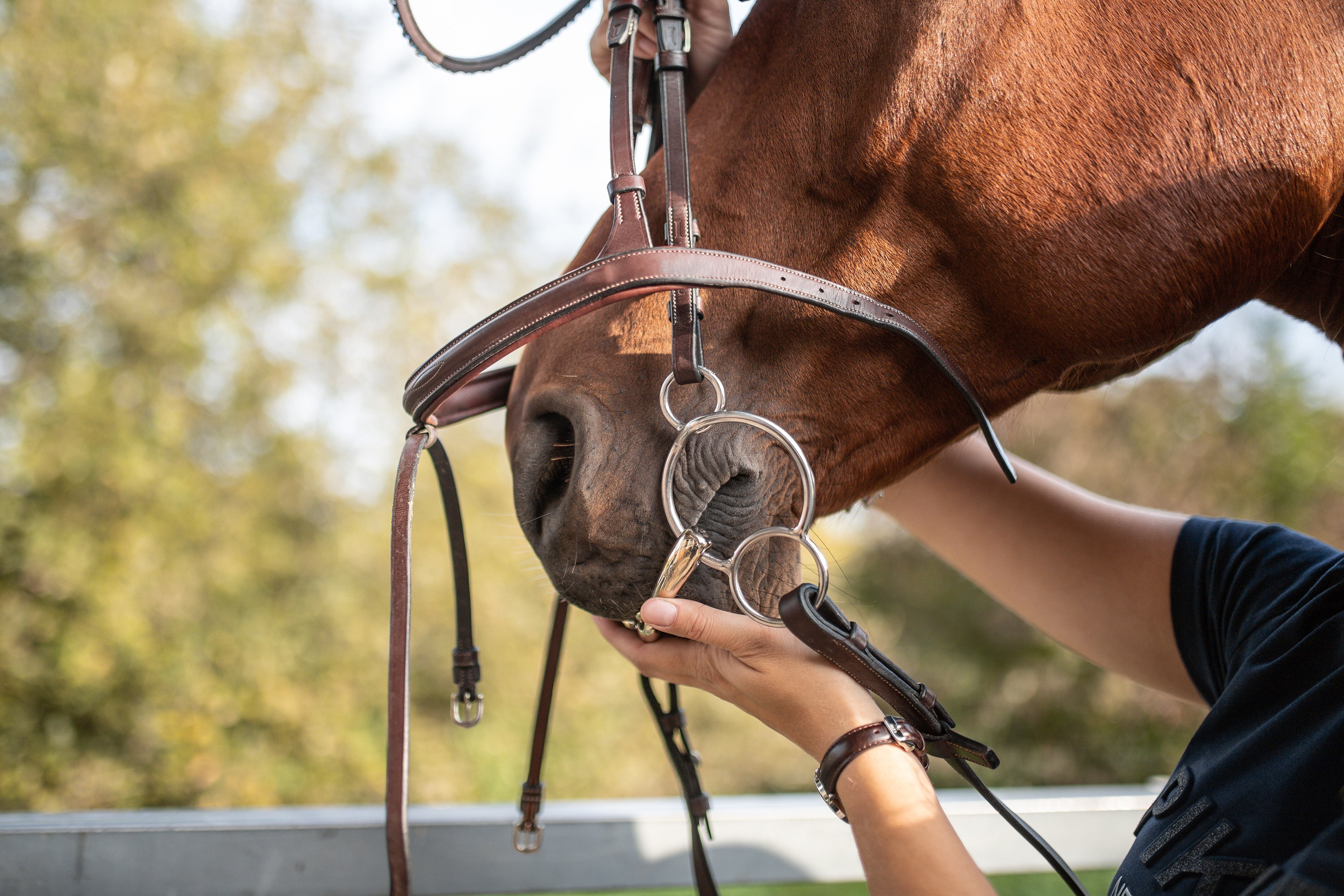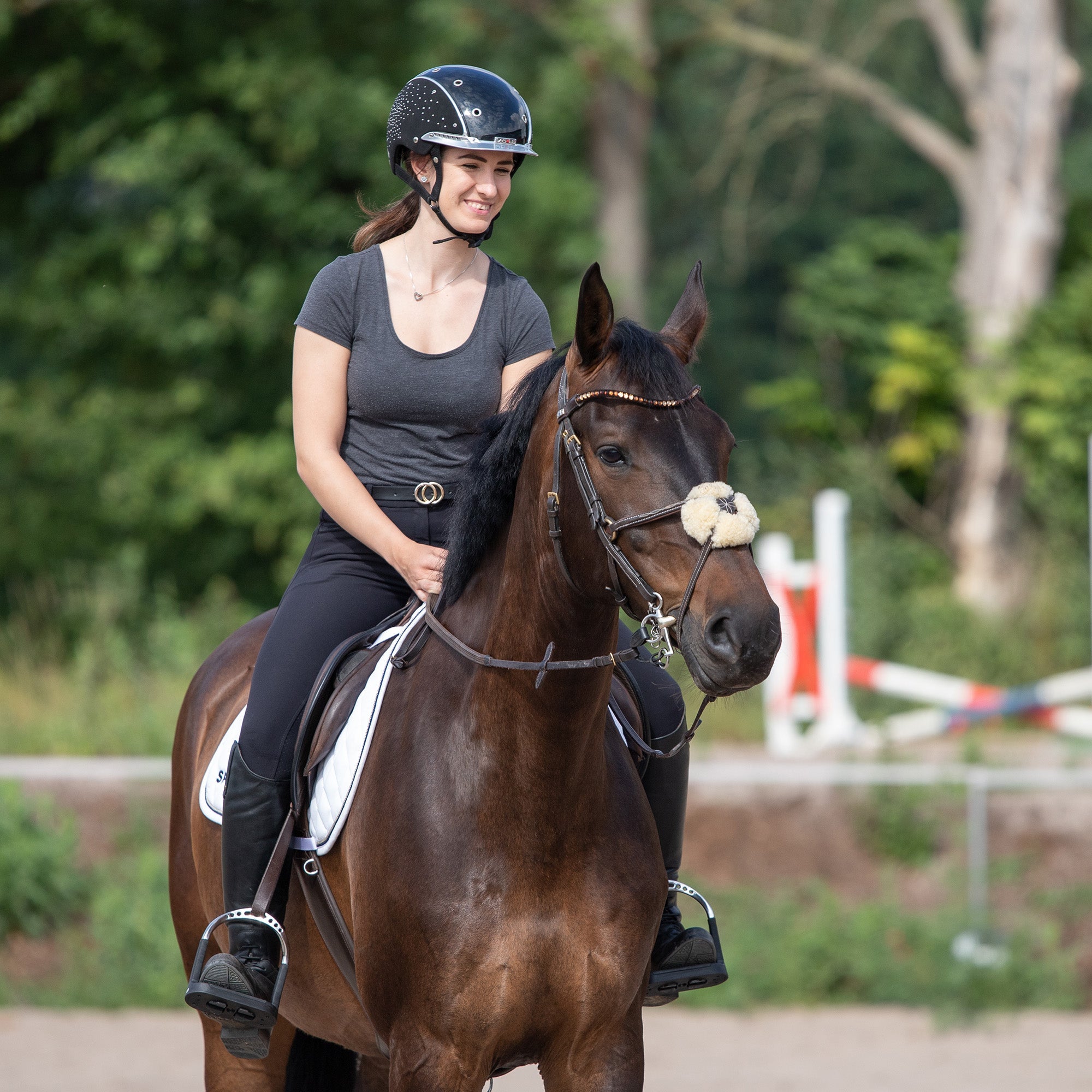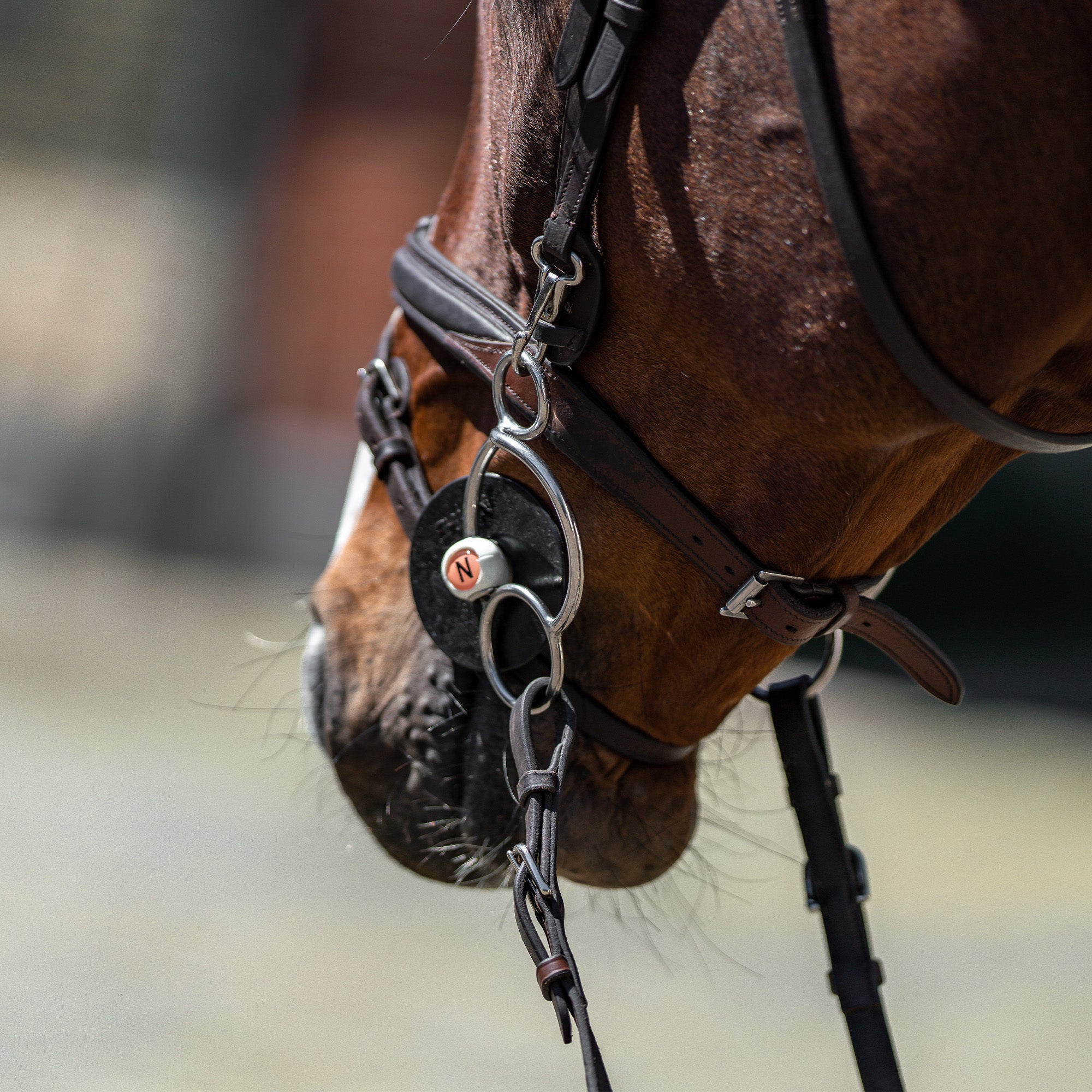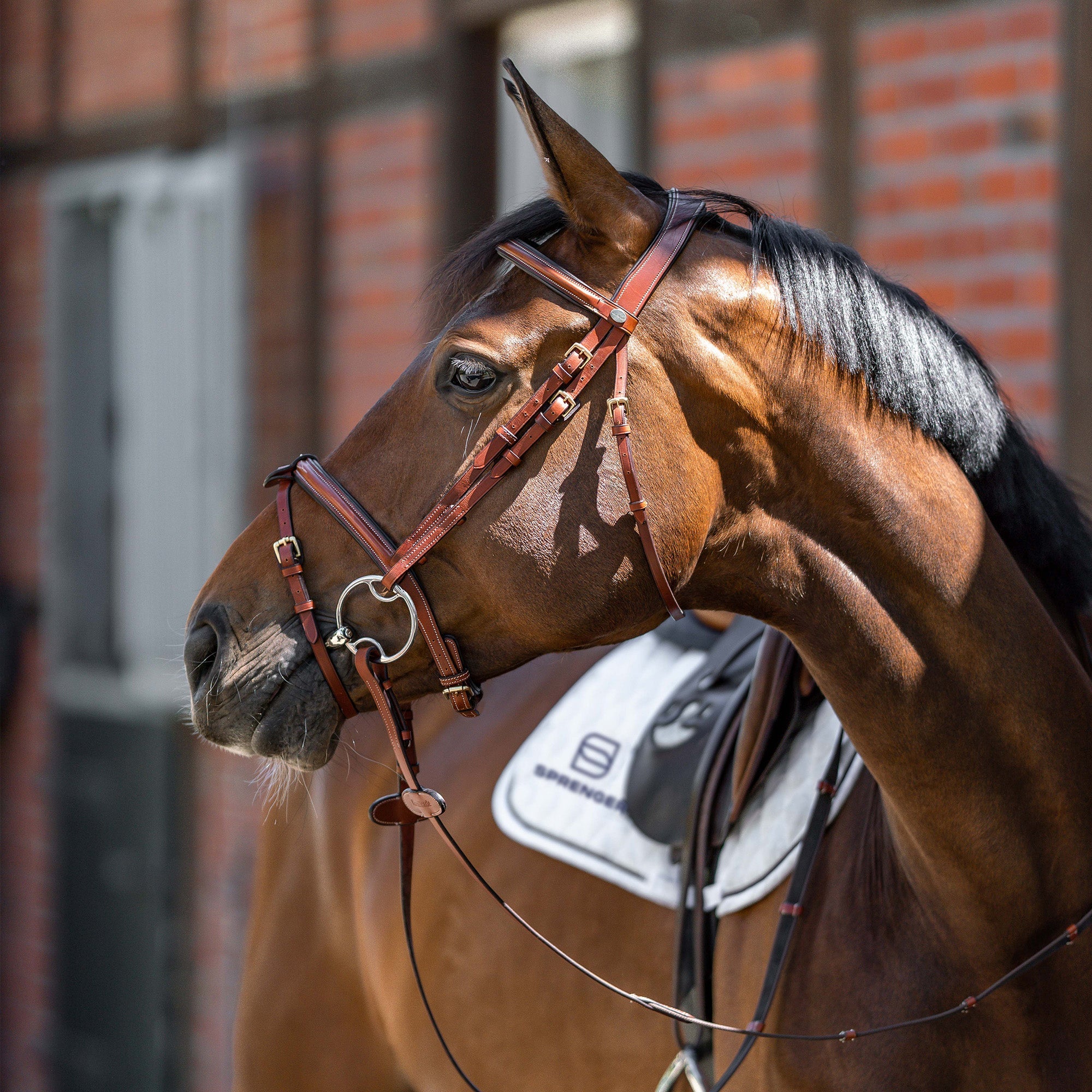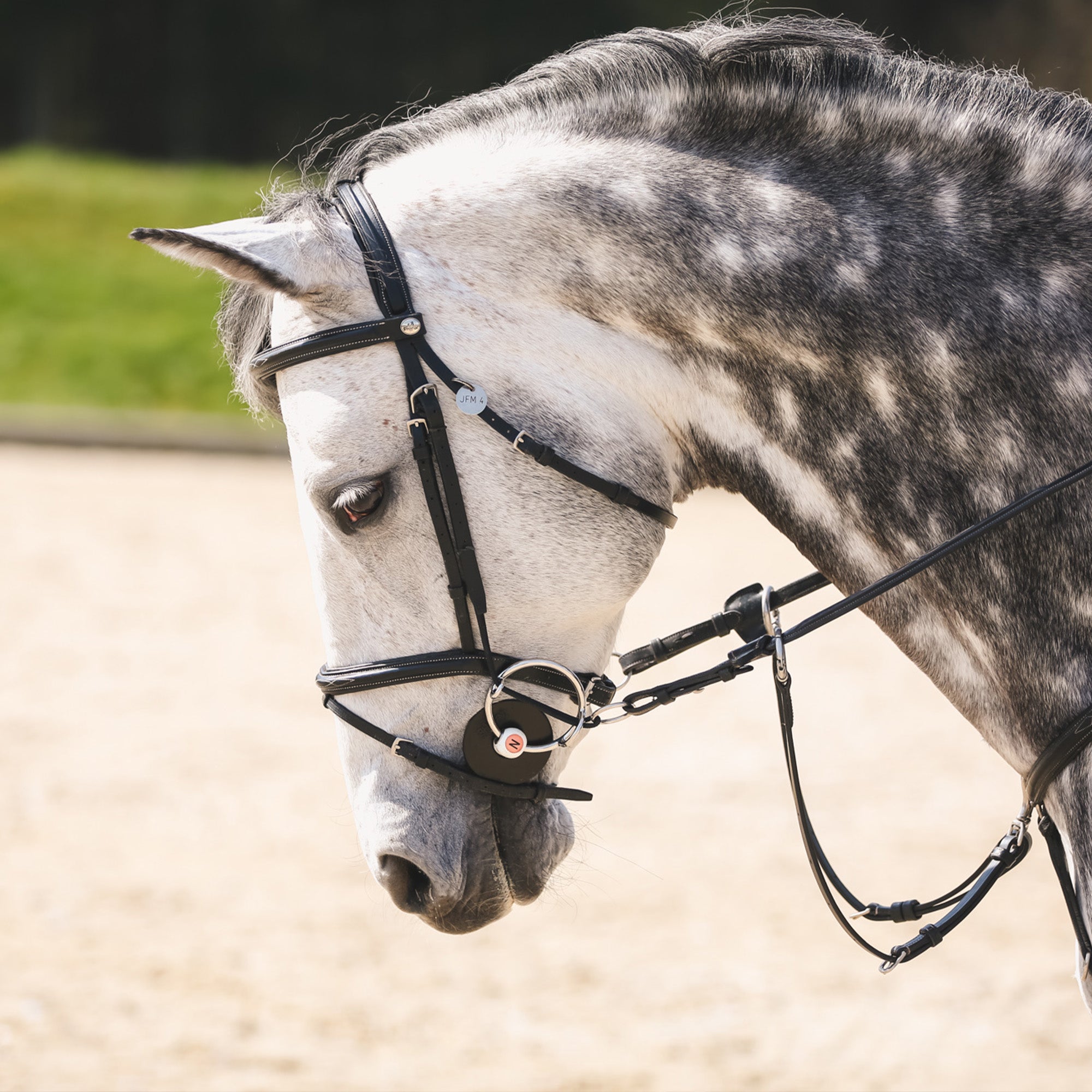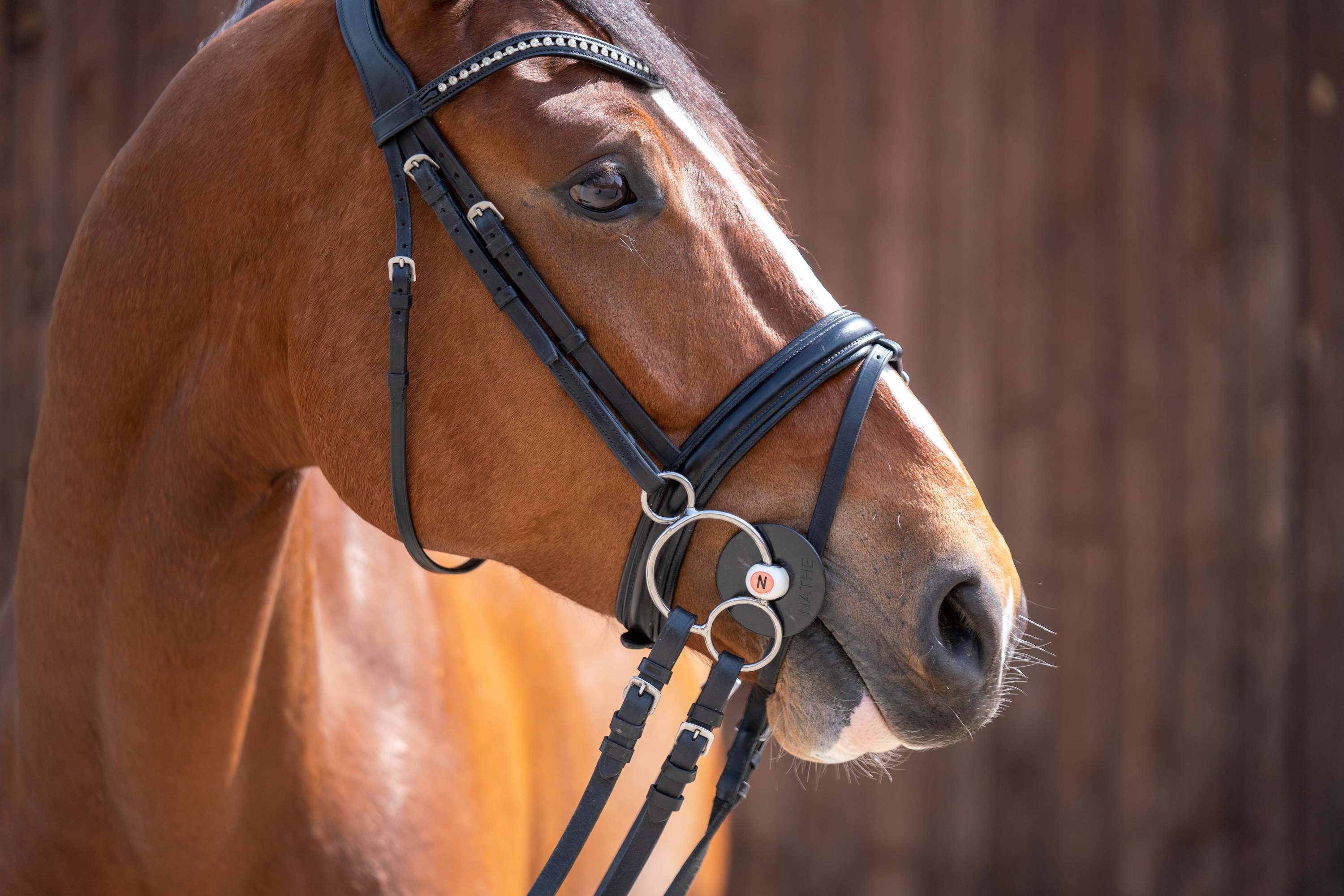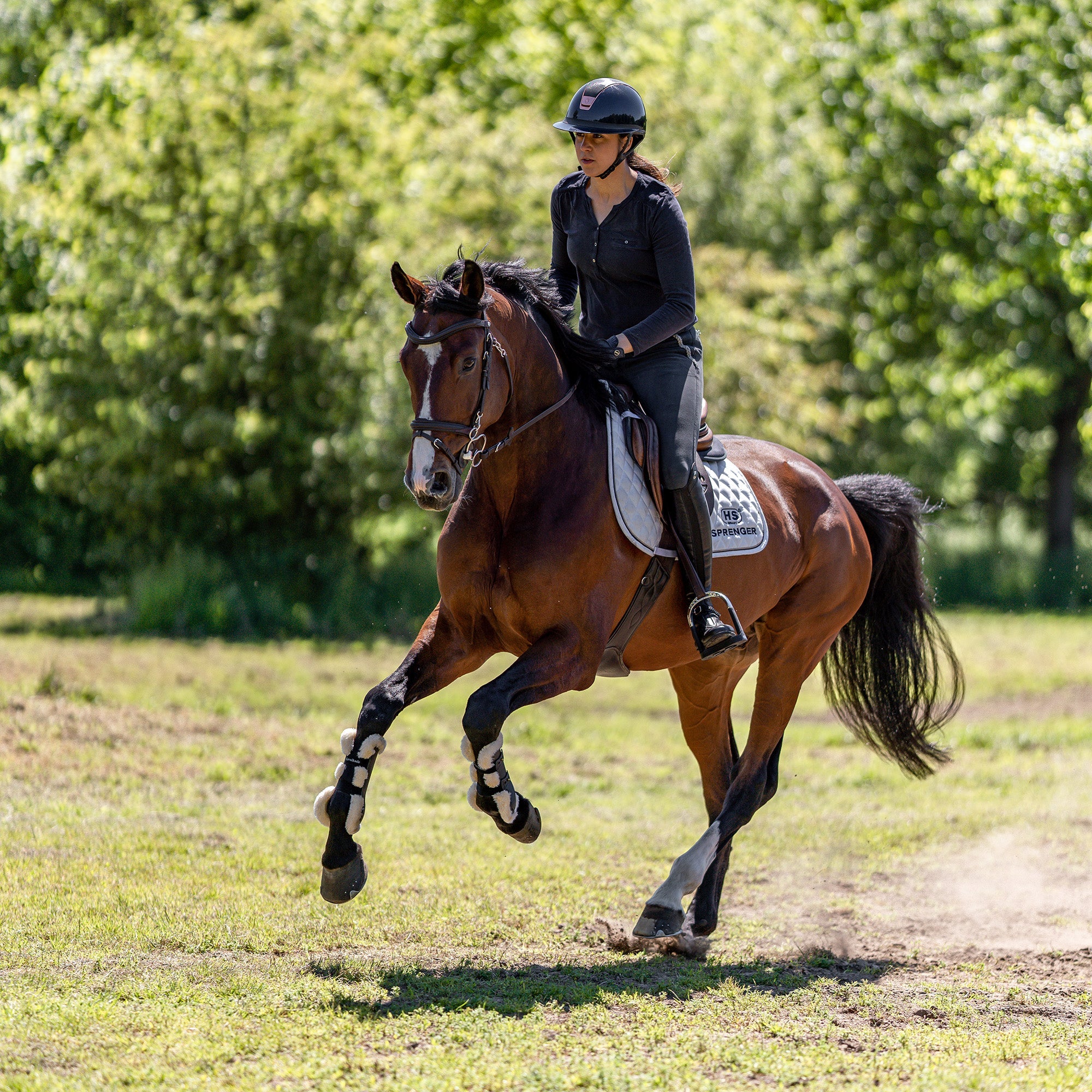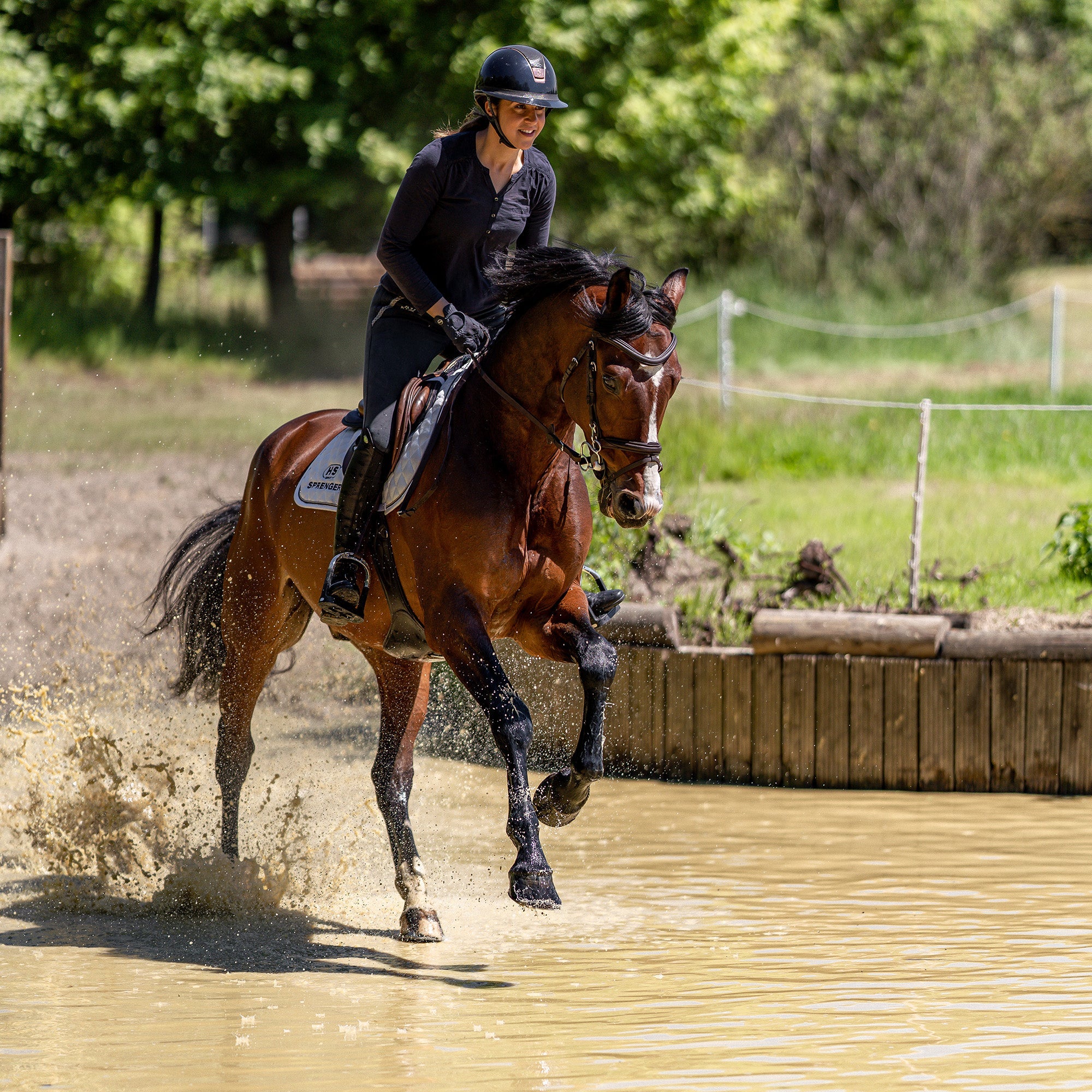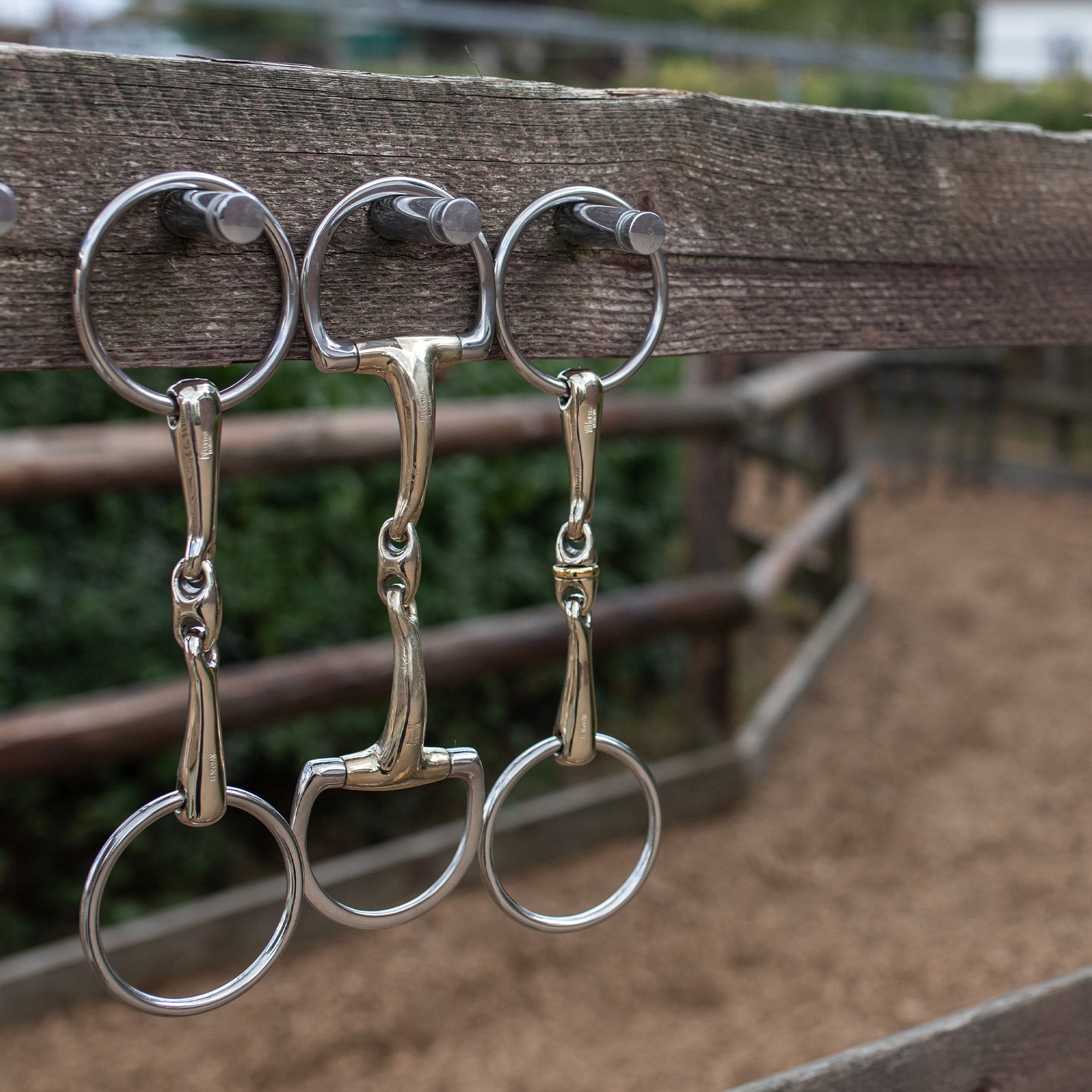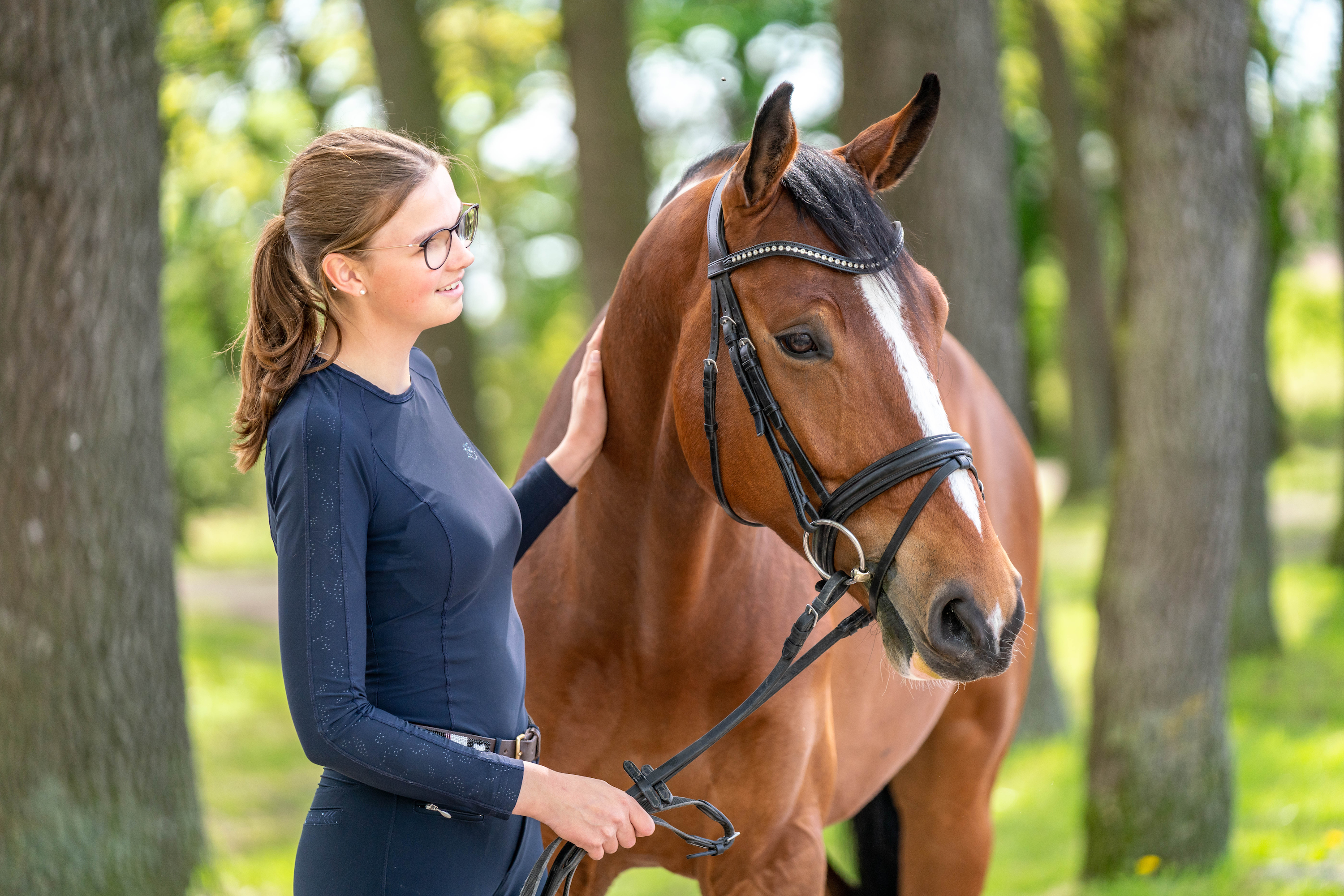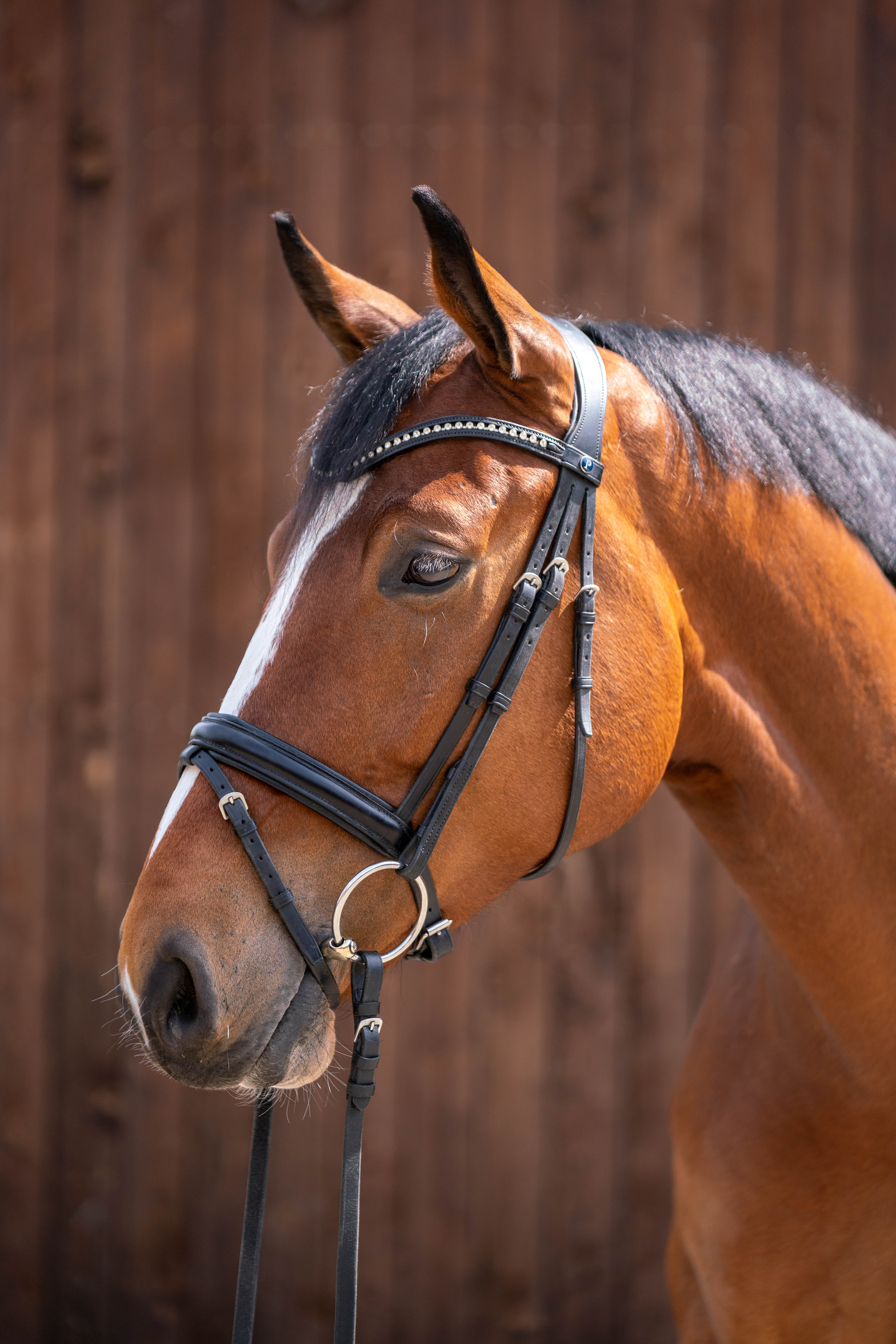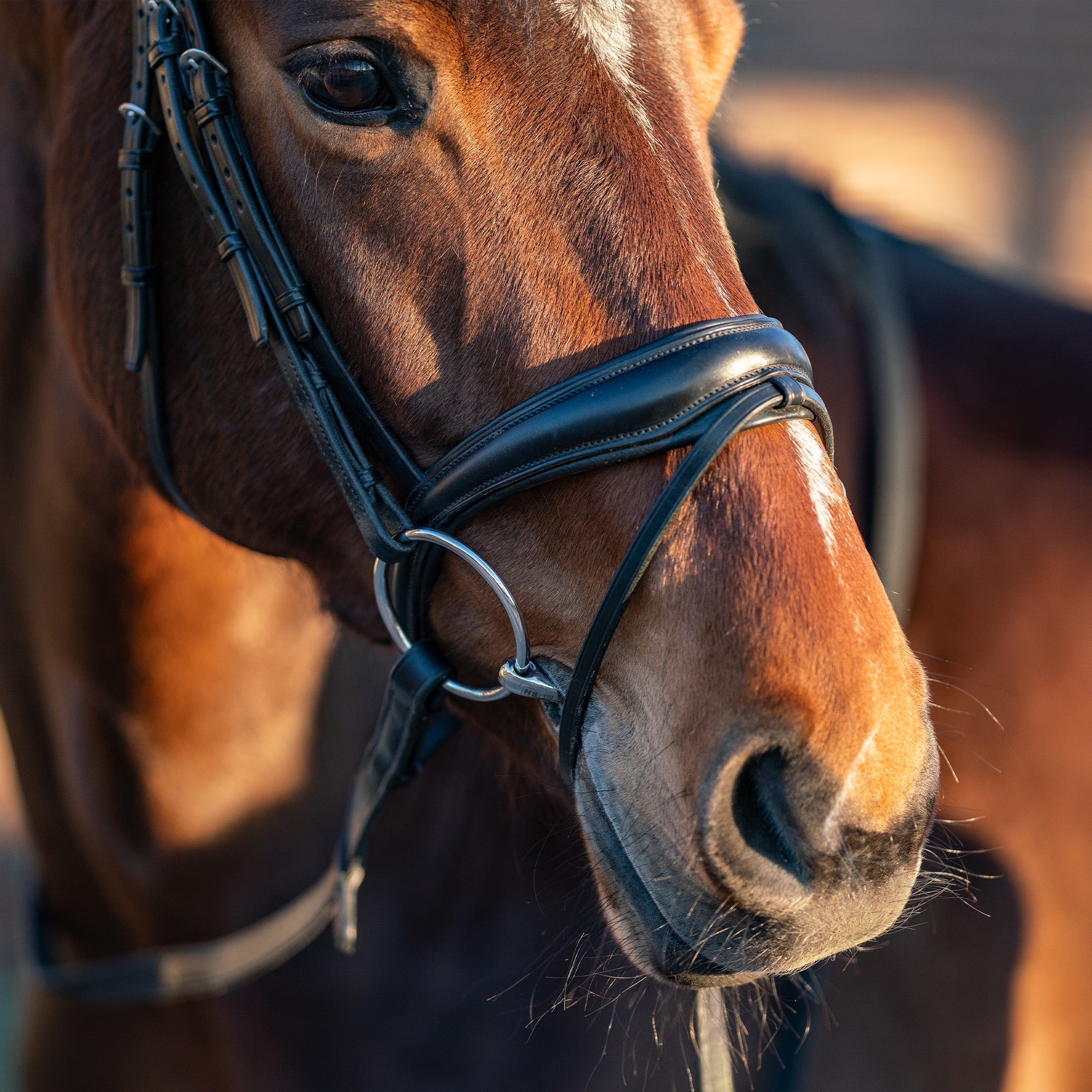KK ULTRA 3-Ring 18 mm - Sensogan
18 mm, 70 mm, 3-Ring
anatomically adapted mouthpiece, middle link angled forward by 45°
helps to create more control over strong horses that evade a contact
extremely versatile - offers 4 different rein attachment options
the leverage effect of the bit can be varied depending on the rein options
using a curb strap can limit the poll pressure and additionally acts onto the lower jaw
ideal to master technically difficult passages in showjumping courses
Description
Description
KK ULTRA bits are the pioneers of modern bits because they have been developed on the basis of scientific research. They achieve their unique, precise effect through the special 45° angle of the middle link. When used correctly, the horse’s confidence in the rider’s hand is enhanced, which is why these bits are used successfully worldwide in all disciplines and across all training levels – a genuine all-round talent!
Compared to conventional bits, the middle link has also been shortened. This anatomical adaptation noticeably optimises the effect compared to conventional double jointed bits.
When the reins are taken up, the middle link – also known as the “lozenge” because of its striking shape – gently rolls over the central part of the horse’s tongue, stimulating its sense of touch.
The KK ULTRA 3-Ring bit is a versatile choice due to the different rein attachment options. Depending on the ring in which the reins are attached, the impact on tongue and poll can be increased individually. This makes the bit suitable for horses with strong go that tend to pull upwards.
Compared to conventional bits, the middle link has also been shortened. This anatomical adaptation noticeably optimises the effect compared to conventional double jointed bits.
When the reins are taken up, the middle link – also known as the “lozenge” because of its striking shape – gently rolls over the central part of the horse’s tongue, stimulating its sense of touch.
The KK ULTRA 3-Ring bit is a versatile choice due to the different rein attachment options. Depending on the ring in which the reins are attached, the impact on tongue and poll can be increased individually. This makes the bit suitable for horses with strong go that tend to pull upwards.
Material & care
Material & care
How do I care for my Sensogan bits?
You should always wash your bits thoroughly with water and dry them after each use. SENSOGAN bits contain copper. Oxidation causes the bits to darken and may lose their shine. However, metal bits are particularly easy to clean and maintain with the help of our "Diamond Paste".Sensogan
Alloy of copper, manganese and zinc. Manganese hardens the copper without affecting the natural oxidation process of the copper. Thanks to the manganese, the alloy has a lower copper content but achieves the same oxidation behavior as AURIGAN.Manufacturer information
Manufacturer information
Herm. Sprenger Metallwarenfabrik GmbH & Co. KG
Alexanderstr. 10-21
58644 Iserlohn
Deutschland
info@sprenger.de

KK ULTRA 3-Ring 18 mm - Sensogan
Sale price184,90 €
Sprenger - tradition and trust for 150 years
Where quality is created
The Sprenger brand stands for the highest quality and innovative design in equestrian sport. Sprenger has been a trusted partner for riders and horse owners worldwide for over 150 years.


